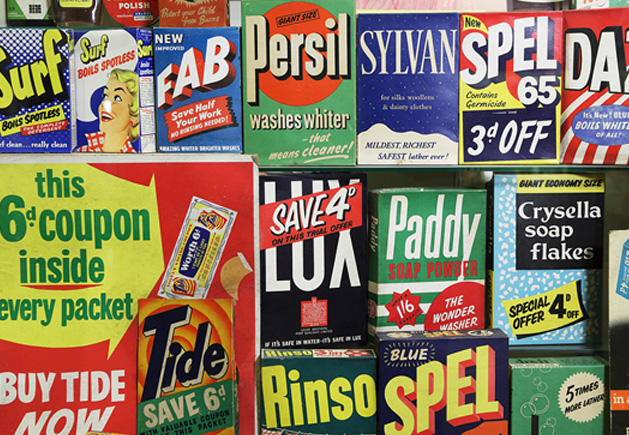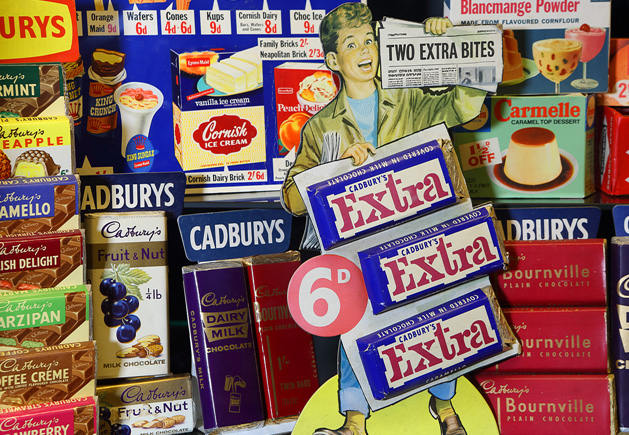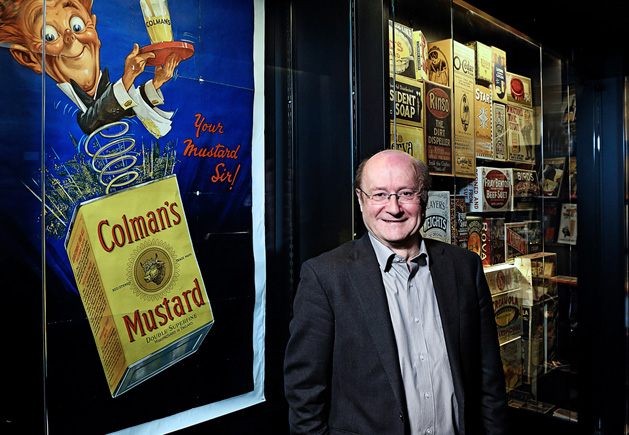FOR THE LOVE OF BRANDS

Branding has changed so much over the decades, but one thing that hasn’t changed is our connection with brands. They always have, and always will, have the potential to shape culture and forge strong personal affinities with us.
The changing looks and messages offered by brands have been charted for over 50 years now by Robert Opie, founder and director of the Museum of Brands, a place where samples of his estimated half a million boxes, cartons, tins, bottles, jars, packets, posters, games, toys attest to our continued attachment to brands.
This month the museum underwent a little brand refresh of its own, moving to an attractive new space in classy Ladbroke Grove, West London, but its purpose remains true to Opie’s original, ambitious intention – to collect each and every brand and piece of packaging ever produced and thus document from its birth what he calls “the consumer revolution”. But what makes the museum really interesting is that it is far more than just a three-dimensional ‘trainspotter’s manual’ where brand names from A-Z have been collected, ticked off, and categorized for us to view. The museum shows how a strong brand connects with us, as proved by the exclamations of recognition and personal memories evoked from its visitors. “People immediately make the link between these objects and the key moments in their own lives’” Opie says. “Very few places can do that.”

Interestingly, these feelings are not always ones of happiness, such as recognizing a well-loved and long-forgotten brand from childhood; they may also be feelings of dismay when seeing a once-loved brand lose its way. Opie himself claims he was “horrified” when, in 1985, the glass bottle that had held Rose’s Lime Juice Cordial for 100 years became plastic. The enduring characteristics of a brand are forgotten at the marketers’ peril.

Robert Opie among his treasures.
“Marketing people sometimes forget that as a society we don’t always want change,” Opie has said. “We like consistency and routine. Indeed some brands trade on their heritage and maintain an unchanging image: look at Marmite, Lyle’s golden syrup and Golden Shred marmalade. Most brands maintain their identifiable logos: look at Kellogg’s, Heinz and Coca Cola. Brands that have survived from the pre WWII era have had to keep their product relevant and contemporary, but without alienating their customer base by over changing.”
And thereby hangs the challenge for today’s marketers. Change is the most obvious way to be seen and heard in today’s increasingly cluttered landscape, but phasing out the existing features of a much-loved brand is a huge risk.
The museum also documents how brands sometimes try to trick their way into our lives, a increasingly less effective tactic in today’s more responsible and savvy consumer climate, as we’ve often discussed here on the LAW blog. A particularly transparent phase of this, which Opie has described as “a wonderful mad moment”, was in 2012, when, in the year of the Queen’s Diamond Jubilee and the London Olympics, the union flag was desperately plastered on everything from toilet paper to the wrapper of a Ginsters Chicken and Mushroom pie, a classic example of trying to make a quick, clumsy, opportunistic link with the consumer, rather than a meaningful communication.
We think it’s always better for brands to be invited into consumers’ lives, rather than try to “gate-crash the party”, and a tour of the Museum of Brands proves our point. It shows just how much we become fond of the brands that we invite into our lives, and how a lack of understanding and communication with the consumer brings failure. That’s why we at LAW Creative work hard to create brands and messages that are welcomed and loved, not by using opportunistic “short cuts” or gratuitous disruption but by offering relevant and meaningful messages.
If you’d like your brand to deliver meaningful messages that will encourage customers to invite your brand into their lives, contact brett.sammels@lawcreative.co.uk.
